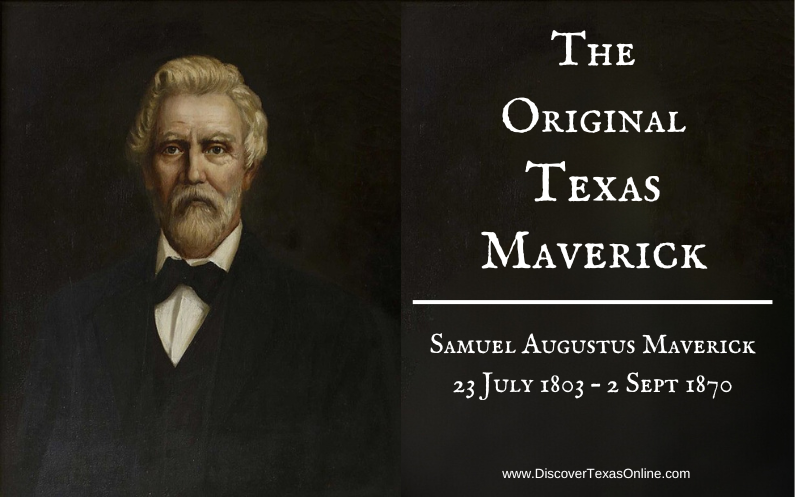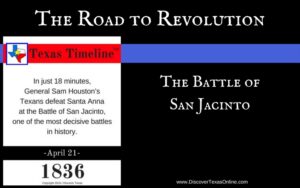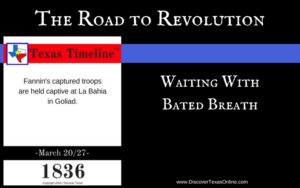
Texas has no shortage of legends and heroes, but Samuel Maverick so embodied the spirit of Texas that his name became the term used to describe Texans’ famous independent character.
Born in Pendleton, South Carolina on July 23, 1803, Maverick came to Texas in April 1835 to take advantage of the opportunity to purchase land. He spent several months looking at land along the Brazos River north and south of San Felipe, selecting San Antonio for its dry climate and availability of acreage.
Maverick was staying in the San Antonio home of John Smith on October 16 when General Martín Perfecto de Cos placed a guard at their door, forbidding Maverick and the other residents to leave the city. By October 24 the volunteer Texian Army had arrived to beseige the city. Maverick wrote letters to keep the Texans informed about the situation within the city and kept a diary giving an eyewitness account of the Siege of Bexar. When General Cos released Maverick and Smith on December 1, they made their way to the Texian Army, providing them with insider information and joining the attack that began the morning of December 5. Afterward, Maverick remained with the army sheltering in the Alamo until on March 2 he was sent to Washington-on-the-Brazos where delegates were signing the Texas Declaration of Independence with instructions from Col. William Barret Travis to urge the convention to send reinforcements. He arrived too late to complete this mission, but signed his name to the Texas Declaration of Independence and stayed to help draft a Texas Constitution.
Samuel Augustus Maverick served Texas as a land baron, an attorney, a politician, and as mayor of San Antonio. In 1867 his name, maverick, was first used to describe someone free and independent because he refused to brand his cattle, leaving them unmarked as belonging to any man or herd.
Maverick County, Texas is named for him.



